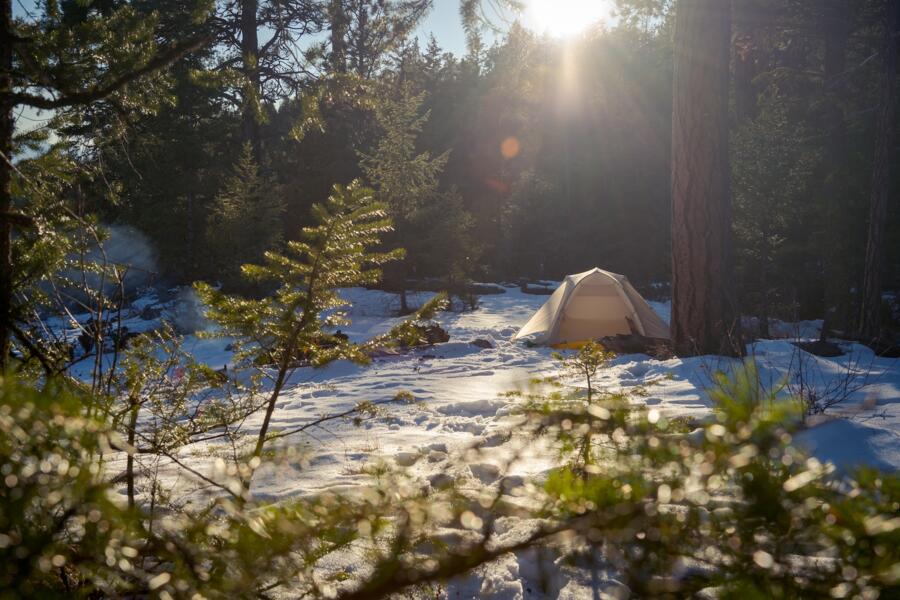
Freedom of nature
Sustainable getaways
Real human connections
A short guide to winter camping: the best winter tent, gear and activities
What are the best tents for winter? What are the best ways to have fun and keep warm outdoors? Read our short guide to having the best time winter camping during the colder months.
Winter camping can be a great experience. It can also be a cold, wet, and miserable experience if you're not prepared. In this blog post, we'll help you find the best winter tent and gear for your next winter camping trip. We'll talk about what to look for in a winter tent, what kind of gear you'll need, and how to stay warm and dry while you're camping. So whether you're an experienced winter camper or just getting started, read on for the need-to-know basics on winter camping.
Finding a winter tent for a warm night's sleep
When it comes to finding a winter tent, the most important factor is warmth. You'll want to find an insulated tent with a proper weather-resistant outer layer. The best way to find a warm winter tent suited to your specific needs is to read online reviews from other winter campers. Once you've found a few potential options, make sure to compare prices and features to find the best value for your needs.
We recommend visiting one of the following stores and talking to an expert for the best advice:
🇳🇱 The Netherlands : Bever
🇧🇪 Belgium: A.S. Adventure
🇩🇪 Germany: Unterwegs Outdoor
There are a few other things to keep in mind when shopping for a winter tent. Make sure the tent is large enough for your group or family, and be sure to buy one with an enclosed vestibule or porch area where you can store gear without letting in cold air. It might be advisable to choose a tent with easy-to-use setup instructions, so you don't have to struggle with putting up the tent in the cold weather.
With these tips in mind, you should be able to find the perfect winter tent for a warm night's sleep during your next camping trip.
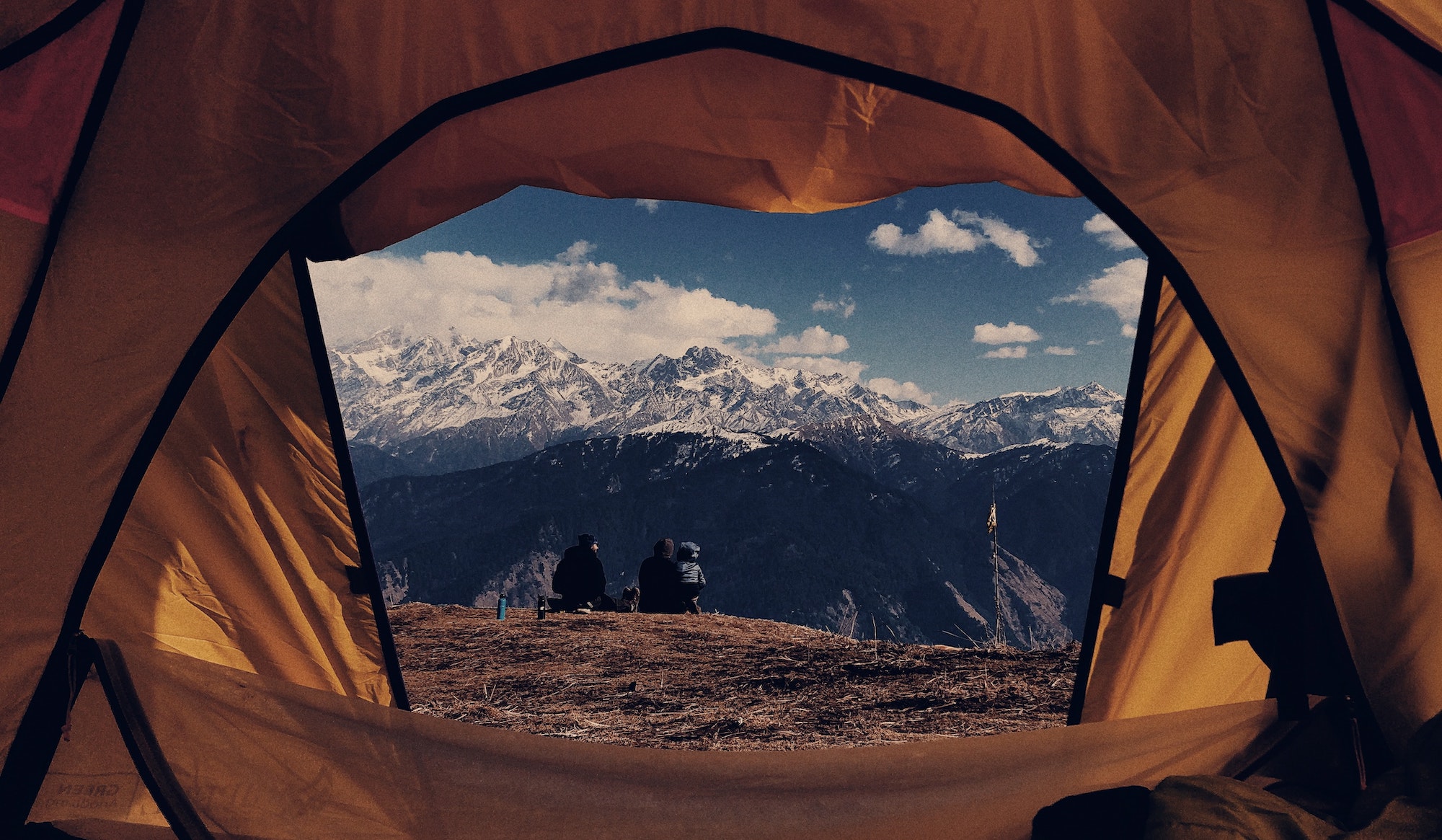
What to pack when winter camping
When winter camping, you need to pack gear that will keep you fed, having fun, and most importantly warm and dry. Read a list of essentials below and check out this winter camping packing list for more miscellaneous items.
Backpack: When you're backpacking for an extended period of time in the winter months, you'll want to pack extra gear and bulkier clothes. It may also be necessary to use a larger backpack than you typically would in the summer. Remember that it's always best to carry as lightly as possible while still making sure you have everything you need.
Sleeping bag: Having the right temperature-rated sleeping bag is essential when you're winter camping outdoors in cold weather. A 2°C difference can make all the difference to your comfort on a cold night. If you get too warm, you can always unzip for some cooler air. One of the leading advantages to choosing a cold-weather sleeping bag is the insulation. Winter sleeping bags have features like draft tubes around the zips to keep cool air away, added collars and hoods to help keep in heat produced by your body. Goose down insulation, in particular, is popular because of its ability to be lightweight and keep warm. It's important to remember to keep it dry, however, as when it's wet it loses much of its insulating ability. If you're not sure if your sleeping bag is warm enough, adding a liner can often do the trick. A liner will provide extra warmth, minimise wear, and keep your bag cleaner. It can add a good degree of warmth to a regular sleeping bag.
Sleeping mat: A sleeping mat provides a crucial layer of insulation and protection from the ground. You might want to consider doubling up, especially if the ground is frozen. Ideally, a foam mat goes on the ground and a self-inflating mat goes on top. When picking a sleeping mat, it's important to consider the R-value. Pads are rated by how well they insulate, anywhere from 1.0 to 8.0. Higher R-values will keep you warmer in cool or cold weather conditions. If you plan on camping all year or just during winter months, we recommend opting for an R-value of about 4.0 or higher.
Ground sheet: Use a ground tarp or footprint. A ground tarp will help keep the cold and moisture from the ground from coming into your tent, which is the number one rule for a warm tent.
Camping stove: In the winter, liquid fuel stoves and some jet-burner stoves are reliable options that will be essential for preparing that all-important hot meal. Liquid-fuel stoves run on white gas, which burns well in cold temperatures and keeps hot for a long time. They're typically heavier and slower to boil than jet-burner stoves operating with a canister. Most jet-burner stoves are lightweight and compact, but they don't work well in cold weather. If you're going to use one for winter camping, make sure it has a built-in pressure regulator. When it's really cold, canisters depressurise and produce a weak flame. You should also hold on to your fuel canister when you're around camp and getting ready to cook so that it stays warm.
Thermos and insulated food containers: Whether it's coffee, hot chocolate, tea or hot toddys, it's always a good idea to keep your favourite hot drink close to hand! You can boil up a big batch for your whole crew and store it in a personal thermos to enjoy for the next hour or two. A great way to warm up.
Waterproof shoes (or snowshoes or skis): If there's only a few inches of snow on the ground, you're able to hike! But, if you're headed to an area that gets lots of snow, you'll need something more than just your boots. You can pack snowshoes, cross-country skis or even a snowboard if the terrain allows it. Keep in mind, while these pieces of gear make for a fun trip, they are a pain to carry with you to camp.
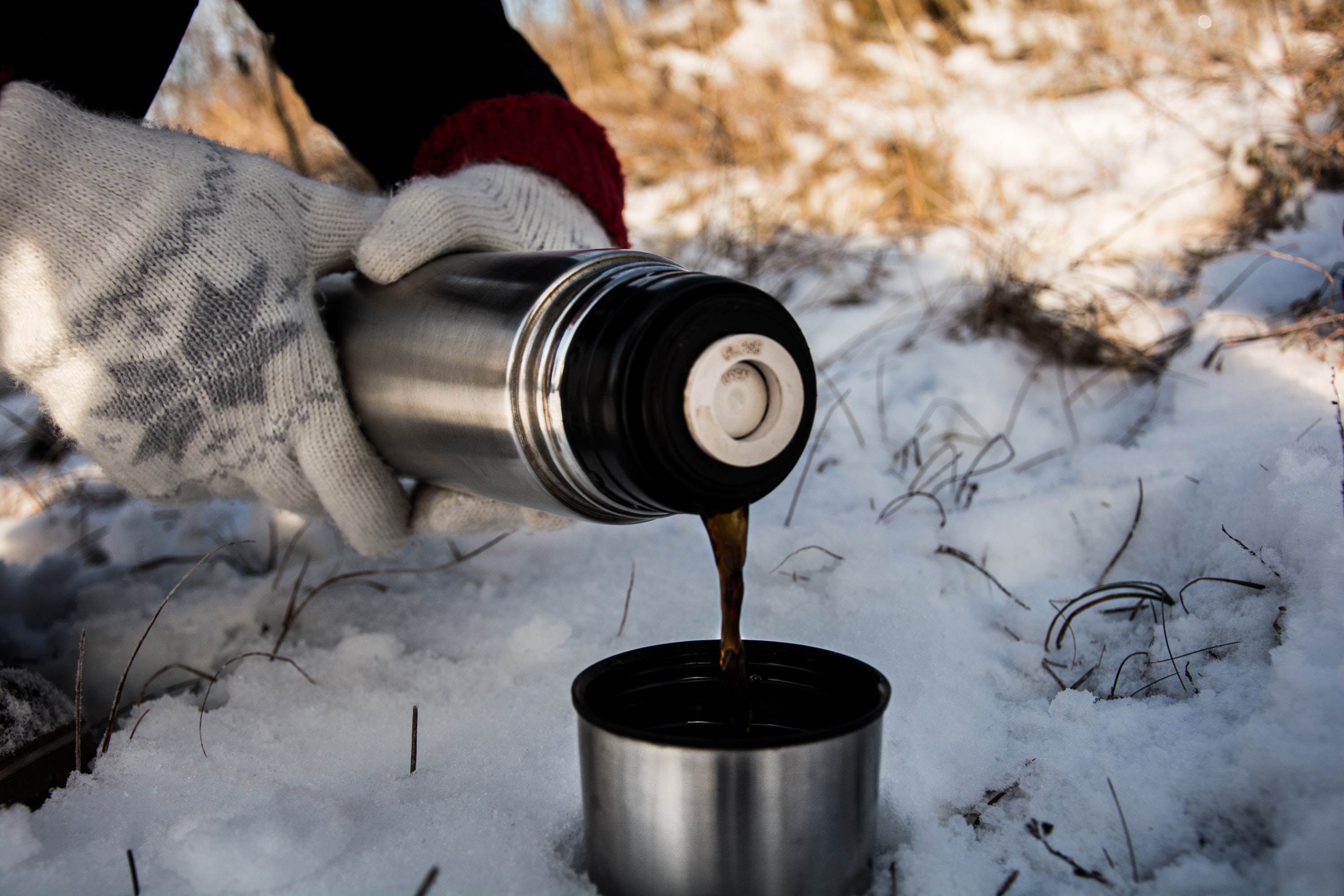
What to wear when winter camping
Assuming you have the proper gear for winter camping, you need to make sure you are dressed appropriately. This means layering your clothing so you can adjust to the ever-changing temperature. You should dress in loose, comfortable layers that will wick away moisture and keep you warm. A base layer of synthetic material or wool will help to regulate your body temperature and prevent sweat from building up. An insulating middle layer made of down or synthetic fill will help to trap heat, while an outer shell layer that is waterproof and breathable will protect you from the elements. Make sure to pack extra socks, gloves, and a hat in case of cold weather emergencies.
For maximum mobility, comfort and happiness during winter camping, it's important to dress the right way. Here are three essential layers you should be aware of:
The base layer is the clothing closest to your skin. For winter camping, midweight to heavyweight long underwear is a good choice for all-around use. Along with made-for-exercise materials that wick perspiration from your skin, look for clothes that dry quickly. Wool is the prefered material, because it holds your warmth in best. Synthetic materials will cool down more quickly when you're standing still.
The middle layer is primarily for retaining body heat and most winter campers prefer a puffy down or synthetic insulated jacket. Make sure it's not too puffy though, especially if you want to move a lot, since you will be adding another layer on top of this! Don't forget to add a middle layer on your legs too! Thin fleece on top of your tighter under layer is a good idea for this.
The outer layer serves as your waterproof and breathable defense against the elements. If you'll be in wet or snowy weather, it's important to have fully waterproof outerwear as it prevents moisture from getting past your inner layers and chilling you. Dryer weather can make do with water-resistant fabrics, although we'd recommend you to be prepared for any weather! Your outer garments also need to be breathable so that any perspiration drawn from your base layer can escape.
You'll also need to bring winter accessories to keep your extremities from losing warmth. Bring a wool or synthetic beanie that cover both your ears fully. Now is not the time to look hip! Full coverage is essential. If you tend to get a cold face, bring a big fluffy scarf!
Fleece gloves provide some warmth, but they won't keep your hands warm for long. Insulated gloves with waterproof/breathable shells will keep you warmer. Whatever you choose, it's important to pack an extra pair in case they get wet.
A little-known fact about socks: it's important to wear warm socks that are appropriate to your boot size. If the socks are too thick, they won't keep your feet warm as they'll make your boots too tight. Bring an extra pair of socks with you; you never know when you might need them.
When there's no snow or rain, you can use regular hiking boots, but as usual, we'd recommend to go for waterproof, insulated shoes always as you never know when the weather might turn. If you are truly embarking on a winter adventure in deep snow, you may want to get dedicated mountaineering boots that are completely waterproof and hardwearing.
Essential tips for winter camping
🧤 Staying warm
- Did you know you feel colder when you need to pee? Emptying your bladder lets your body refocus it's energy on keeping the rest of your body warm as it doesn't have to heat the contents of your bladder to your internal temperature. It's called homeostasis, look it up!
- Preventing cold injuries is an important part of winter camping. It starts by being prepared before taking on the elements read up on chilblains, frostbite and hypothermia and how to avoid them.
- Don't let yourself get cold. Start your trip warm and keep it that way, by dressing appropriately at all times, staying active with running on the spot or jumping jacks, eating something warm, or hugging your fellow campers!
- Try using your foam sleeping mat for more than just sleeping. When you're cooking, it can be helpful to use the pad to sit and stay slightly warmer and drier.
- You'll want to make the most of your floor space inside your tent. If there are empty spaces, your tent will be hard to warm up. Bring your backpack and other gear inside and place them on the ground around you to provide some extra insulation against the cold. In a similar vein, it's best to sleep with others to keep the temperature in your tent up!
- Set up your tent in a sheltered spot. If possible, find a spot that's out of the wind and close to trees or other large objects that can block the wind.
🥘 Cooking
- Make a stove base. Using a non-flammable plank or slab as a stove base can improve the performance of your stove, so cooking becomes less of a hassle. The base will prevent it from sinking into the snow or wet ground and becoming unstable as it heats up. If you're using a stove that sits on a fuel canister, wrap the base in tinfoil to reflect some heat back up and help keep the canister warm.
😴 Sleeping
- A clean bed is a warm bed. Try your best to sleep in clean clothes as over time body oils, sweat, and dirt can rob your layers and sleeping bag of their insulating power. Change into long underwear and socks for a more comfortable night sleep.
- To ensure that your sleeping pad stays in place and you stay warm, add a couple of waterproof layers to the bottom. The insulation will work to keep you warm all night long.
- Sleep naked! If you've got a winter sleeping bag, go ahead and take off all the aforementioned layers for sleeping. You'll stay warmer this way.
- Use a hot water bottle. Fill a small rubber hot water bottle with hot water and tuck it into your sleeping bag to help keep you warm. are rated by their temperature range, so make sure you get one that's appropriate for the conditions you'll be camping in.
🔦 Using your tools
- When it's cold outside, make sure you keep your headlamp, GPS, and cell phone batteries fully charged. You can also buy extra battery packs in case you need them. Lithium batteries are good for cold weather since they don't lose charge as quickly. Alkaline batteries have a slower drain on the device, but take up more space in your backpack.
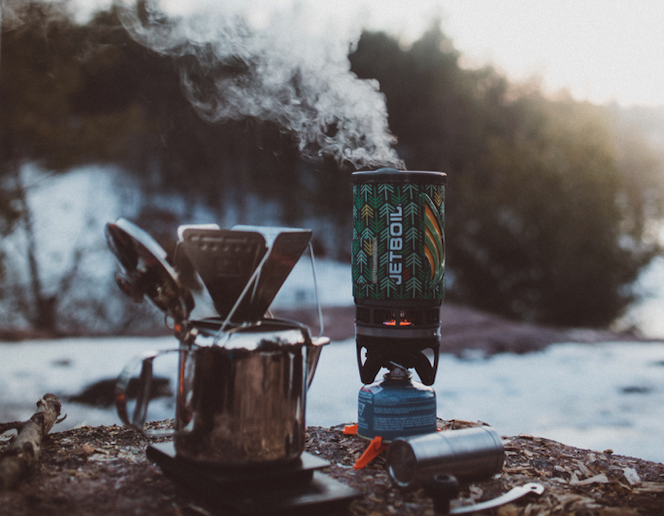
Outdoor activities while winter camping
One of the best things about winter camping is the variety of outdoor activities you can enjoy. Here are a few ideas for when it's cold enough for the water to freeze and snow to fall. If it's not that cold, think about rock climbing, mountain biking, hiking and foraging, just as you would in the summer!
🛷 Sledding – If there's snow on the ground, sledding is a great way to get around and have some fun at the same time. Just be sure to dress warmly and avoid areas where there are trees or other obstacles.
🎣 Ice fishing – If you're lucky enough to have access to a frozen lake, why not try your hand at ice fishing? It's a great way to relax and enjoy the quiet beauty of winter. Just be sure to dress warmly and stay safe on the ice.
☃️ Building snowmen, snow forts and igloos – This classic winter activity is fun for all ages. It's a great way to get some exercise too! If you have some time on your hands and want to try building a proper igloo, check out this guide.
Whatever outdoor activities you enjoy, just be sure to dress warmly, keep dry and be mindful of your environment while winter camping.
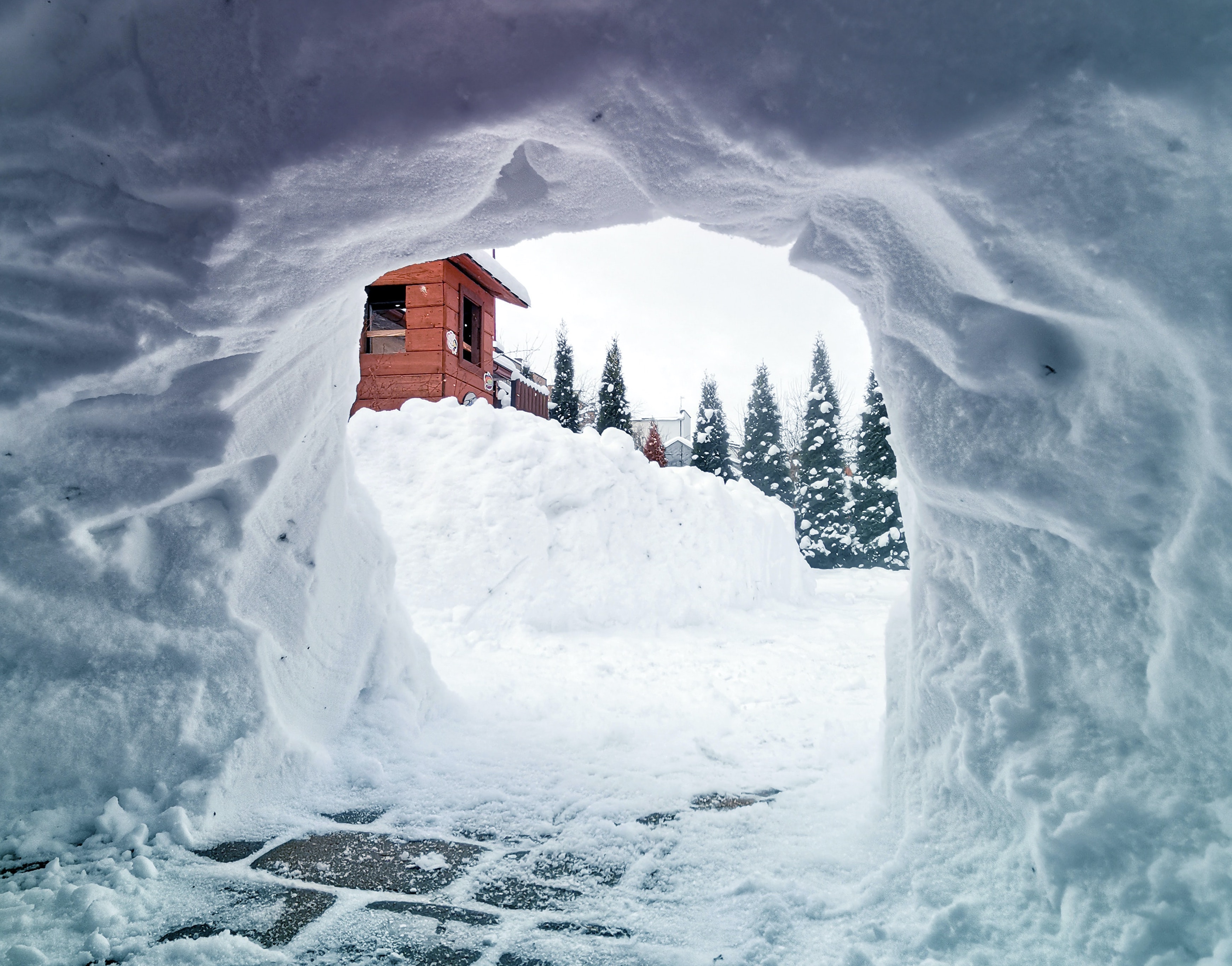
Responsible winter camping
Just like in any other season, it's important to leave no trace after spending a night in nature. If we want to keep enjoying the great outdoors, be it in someone's garden, farm or campsite, we have to show respect to the environment and the landowners.
- Be mindful not to disturb fauna and flora in the area any more than you have to
- Remove any traces of your dining, toilet and fire setups after packing up your winter tent and gear.
- Observe wildlife from afar.
Why a winter camping trip is worth it
When the temperature outside starts to drop, camping might be the last thing on your mind. But winter camping can be a great experience if you’re prepared with the right gear. Here are some reasons why a winter camping trip is worth it:
- Winter camping can be incredibly peaceful and quiet. With fewer people venturing out in the cold weather, you’ll have a better chance of finding a secluded spot to set up camp. And there’s something special about being surrounded by snow-covered scenery, if you're lucky to have it!
- Winter camping can actually be more comfortable than camping in warmer weather. With the right insulated tent and winter camping gear, you can stay warm and dry even when temperatures are below freezing. You also don’t have to worry about bugs or other pests that are common in the summer months.
- Finally, winter camping can be an adventure in itself. From cross-country skiing to building a snowman, there are plenty of fun activities to keep you busy during your trip. So if you’re looking for something different this winter, consider winter camping!
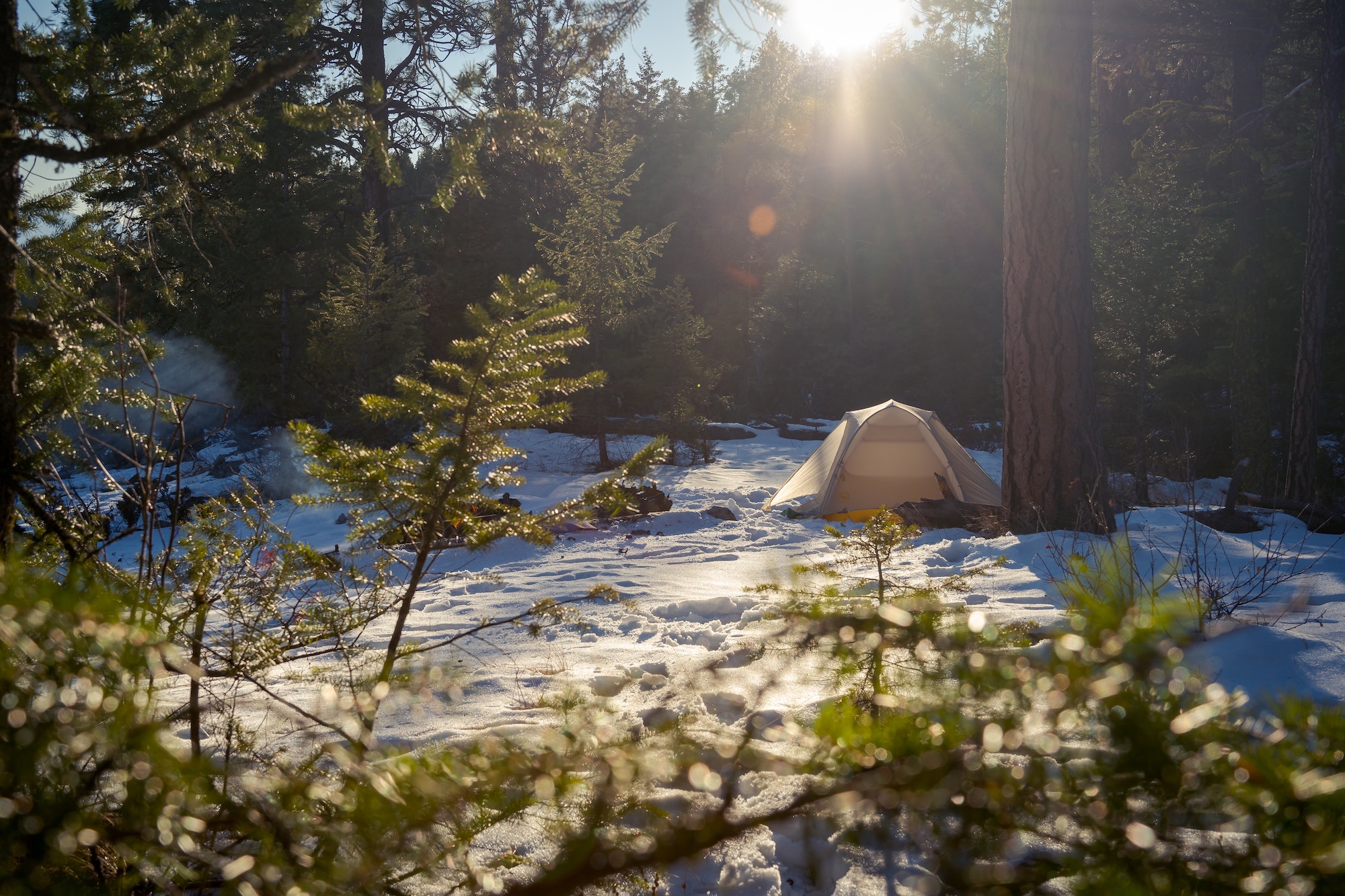
We've got lots of great winter camping options on Campspace, have a browse through the following selections to find the perfect spot for your first or next winter camping experience!
🍂Cosy campsites for winter 🇳🇱 Wintercamping spots in NL 🇧🇪 Winter camping spots in BE 🇩🇪Winter camping spots in DE
💆Winter glamping with hot showers 🚐 Camper sites for winter 🪵Cabins and chalets for winter
Read up on our own winter camping adventures, alongside some ideas on what to stay busy with during your winter camping trip.
⛷Activities to do while winter camping 🌞Bas and Eelco's winter roadtrip to the sun
Find your sustainable getaway
Up to 95% CO2 reduction if you book a campspace adventure. Learn more
